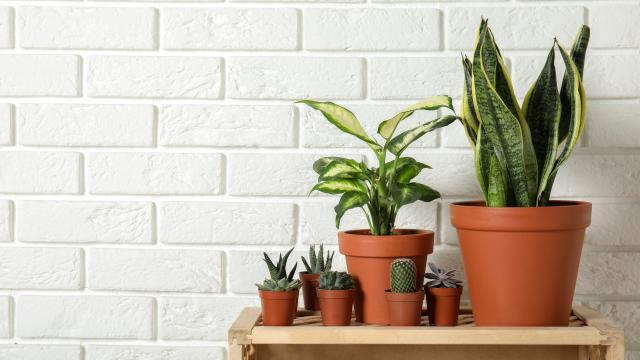Plant people know that it’s not only important to water your plant — you also have to know when enough is enough. It can be really easy to overwater a plan, especially one that only needs to be watered once a week. You may think you’re doing your plant a favour by sneaking it a little more water than it technically requires, making sure it stays hydrated.
But in reality, you could be giving it something called “root rot.” Here’s what that looks like, and one way to attempt to revive your failing foliage using something that’s probably under your sink right now.
[referenced id=”1041671″ url=”https://www.lifehacker.com.au/2021/01/get-a-houseplant-to-feel-more-in-control-of-your-life/” thumb=”https://www.gizmodo.com.au/wp-content/uploads/sites/4/2021/01/03/subzvhp12ahtx6yata0r-300×169.jpg” title=”Get a Houseplant to Feel More In-Control of Your Life” excerpt=”For almost a year, nearly every aspect of our lives has been changed by things beyond our control (mostly the COVID-19 pandemic and its effects). And while having multiple effective vaccines is certainly a reason to be optimistic, that doesn’t mean any of this is going to end in the…”]
What is root rot?
Root rot is exactly what it sounds like. It can be caused by two scenarios, both involving water, according to Gardening Know How:
- Prolonged overwatering, which can cut off oxygen to a plant’s roots, causing them to decay — potentially spreading to (and killing) healthy roots.
- A fungus may be present in the soil and lie dormant until it is overwatered.
You can tell when a plant is suffering from root rot because it starts to wilt and turn yellow. If you take the plant out of its pot and examine its roots, the first thing you might notice is a smell like a swamp and/or rotten eggs. The rotted roots will appear black and may fall apart when touched.
How to use hydrogen peroxide to deal with root rot
Not all plants with rotted roots can be saved. But in some cases they can be, thanks to hydrogen peroxide — which kills the bacteria responsible for the rot and releases extra oxygen into the soil that will help the plant produce new, healthy roots, according to Molly Williams at Apartment Therapy.
Don’t just pour straight hydrogen peroxide on the roots. Instead, create a mixture of one part 3% hydrogen peroxide and two parts water, and put it in a watering can or spray bottle. You can either use it while the plant is still in the pot, or after taking it out of the pot.
Here’s how to water the plant inside its pot, according to Williams:
Let the soil dry all the way through. Then, water the plant thoroughly with the hydrogen peroxide solution. Repeat the process until you see improvement in your plant’s health. If you’re unsure if your plant’s roots are healthy again, pull it out of the pot and check. If healthy, the roots will be firm and whitish in colour.
And here’s how to do it while removing the plant from its pot, again, per Williams:
Gently remove all the potting medium from around the roots of your plant. Once completely exposed, either spray or pour the hydrogen peroxide solution all over the root ball. Repot the plant in a new, damp potting mixture. Let the soil dry before watering the plant again.
While it won’t work every single time, if you’re about to throw a root-rotted plant out because it looks like it’s beyond repair, give the hydrogen peroxide solution a try.

Leave a Reply
You must be logged in to post a comment.